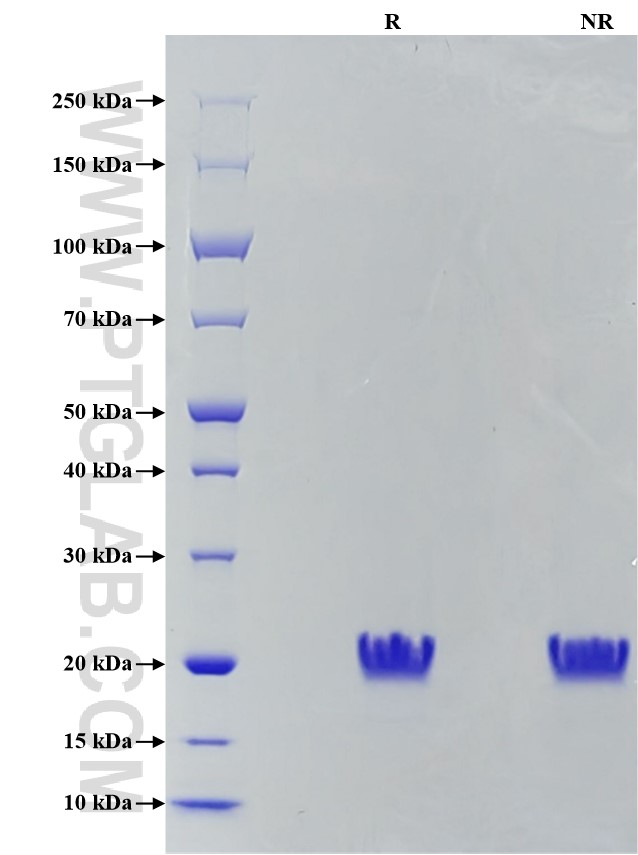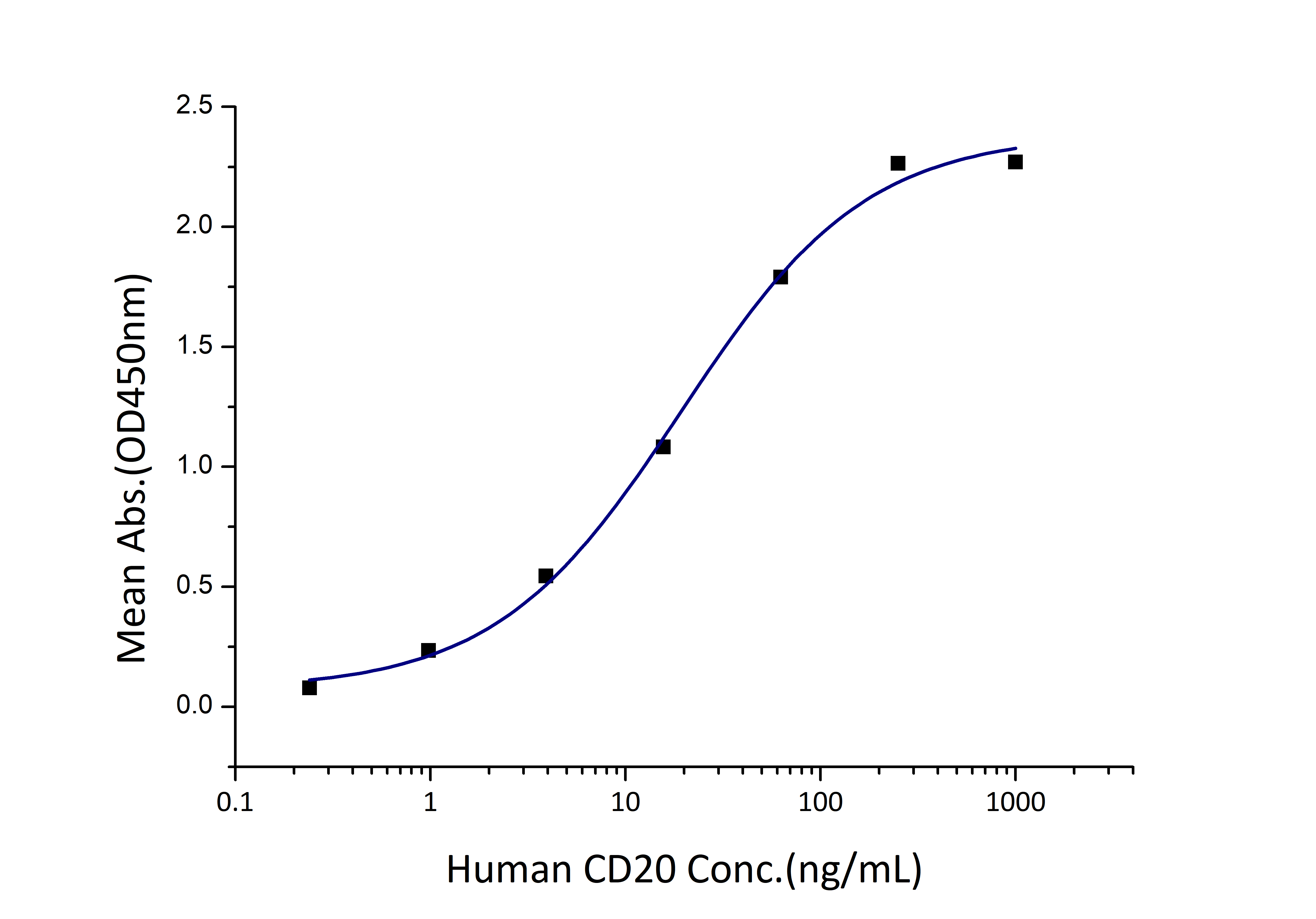Recombinant Human CD20 protein (His Tag)
ED50
10-40 ng/mL
Species
Human
Purity
>95 %, SDS-PAGE
GeneID
931
Accession
P11836-1
验证数据展示
Technical Specifications
| Purity | >95 %, SDS-PAGE |
| Endotoxin Level | <1.0 EU/μg protein, LAL method |
| Biological Activity |
Immobilized Rituximab at 0.5 μg/mL (100 μL/well) can bind Human CD20 (His tag) with a linear range of 10-40 ng/mL. |
| Source | HEK293-derived Human CD20 protein Glu213-Pro297 (Accession# P11836-1) with a His tag at the N-terminus. |
| Predicted Molecular Mass | 10.6 kDa |
| SDS-PAGE | 20-23 kDa, reducing (R) conditions |
| Formulation | Lyophilized from sterile PBS, pH 7.4. Normally 5% trehalose and 5% mannitol are added as protectants before lyophilization. |
| Reconstitution | Briefly centrifuge the tube before opening. Reconstitute at 0.1-0.5 mg/mL in sterile water. |
| Storage |
It is recommended that the protein be aliquoted for optimal storage. Avoid repeated freeze-thaw cycles.
|
| Shipping | The product is shipped at ambient temperature. Upon receipt, store it immediately at the recommended temperature. |
Background
CD20 is a B-lymphocyte surface molecule that is widely expressed during B-cell ontogeny but not on either early pro-B cells or plasma blasts and plasma cells. It is found on B-cell lymphomas, hairy cell leukemia, B-cell chronic lymphocytic leukemia, and melanoma cancer stem cells. Its function is to enable optimal B-cell immune response, specifically against T-independent antigens. CD20 functions as calcium-permeable cation channel. It is involved in the regulation of B-cell activation and proliferation.
References:
1.Dong Fang. et al.(2005) Cancer Res. 65(20): 9328-37. 2.Pedersen M. et al.(2008) Biochem Biophys Res Commun. 377(1): 98-103. 3.Maria J Polyak. et al.(2008) J Biol Chem. 283(27): 18545-52. 4.Taco W Kuijpers. et al.(2010) J Clin Invest. 120(1): 214-22. 5.Gabriela Pavlasova. et al.(2018) Leukemia. 32(9): 2028-2031.

